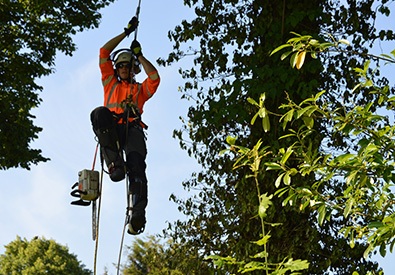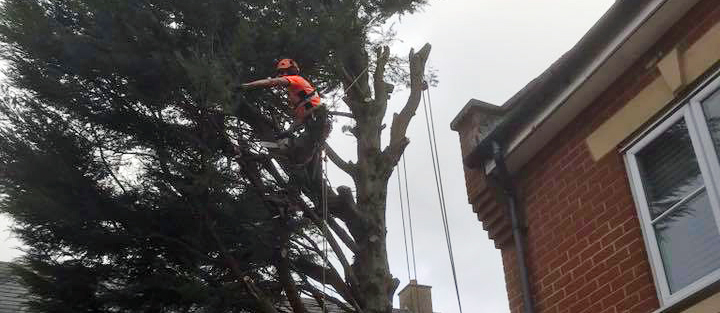BS5837 tree survey recommends the necessary steps to retain trees appropriately when development takes place. This means that there are certain trees on site or near the site where development is planned to take place, and the Local Planning Authority should consider them when making decisions about planning applications.
A BS5837 tree survey should be carried out by anyone considering altering property a piece of land that contains or is close to trees.
Tree surveys are aimed at not only preserving local wildlife but also protecting new developments by ensuring that adjacent trees won’t affect these buildings once they are built. Trees can affect the structural integrity of a property, and this can also affect the market price of the building. Hence, before constructing or renovating a building, it is advisable to have a tree survey conducted by a qualified professional.

BS5837 Tree Survey Glossary
A tree survey usually involves a three-stage process to determine what needs to be done. In most cases, the area that needs survey is determined by the influencing distance of the tree which is about 15 meters. Here are the three stages:
1) Tree survey plan
A drawn plan that shows the specific location of each tree in a specified area. This is important because it is drawn exactly to scale to help plan the tree survey with ease.
2) Schedule
There is a total of 12 point schedule for every tree in the specified area. The first step involves giving each tree a unique reference number. After giving each tree a reference number, here are the other schedule points that are followed:
- Noting the scientific and/or common name of each tree species
- Recording any Tree Preservation Order (TPO) or Conservation Area Protection if there is any
- Record the height of each tree in metres
- Measuring the stem diameter of each tree in cm. The measurement should be taken 1.5m from the ground
- Record branch spread to North, South, East and West
- Preliminary management recommendations
- Age class, i.e. young, semi-mature, mature, over-mature and veteran
- Physiological and structural condition while documenting health and any defects the tree might have
- Remaining ‘useful life’ of the tree
- Tree Quality Assessment – the assessment uses all the data recorded above to determine whether the tree will be retained or removed
3) Tree constraints plan
This plan must show these five things for each tree in the area:
- Tree Quality Assessment
- Root Protection Area
- Future Growth Potential, i.e. crown spread and height
- Accurate position and crown spread
- Shade footprint throughout the day
Professional Tree Surveys
If you would like a tree survey, we can help you because our arborists are qualified to offer ecological and arboricultural consultancy services. If you are worried that the development site has possible constraints, we can offer a site survey and a report assessing all the development constraints.
To get the required assessment, we will use the Extended Phase 1 Habitat Survey and Tree Survey to get all the information we need. After we have gathered all the information we need, we will provide you with a Tree Constraint Report identifying individual trees or groups of trees near the site that are hindering construction. The data we provide is easy to read and understand to help homeowners and property managers to make informed decisions.

